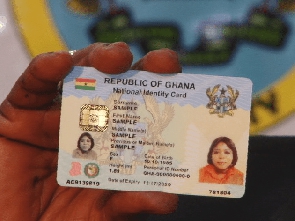Opinions of Friday, 30 October 2009
Columnist: Tengey, Samuel
The Crisis Of Sustainable Traffic Congestion
And Road Maintenance Management In Ghana
SAMUEL TENGEY, PHD
Introduction
There has been an unprecedented growth in the demand for private cars in recent times, resulting in substantial increases in demand for road usage. The effect has been escalating rates of road congestion, especially in cities and urban areas. The problem is that there is uneconomical use of roads in that cars, occupying more road space, account for lower proportion of passenger carriage, while trotros and buses, occupying less road space, account for higher proportion of passenger carriage. According recent statistics on urban congestion (National Transport Policy, 2008) cars and taxis take up as much as 65% of road space, yet carry only 26% of passengers while trotros take up 32% space and account for 68% of passenger carriage. Economic theory postulates that with two goods as supplementary, an increase in the demand for one necessarily triggers an increase in the demand for the other. Hence, as demand for cars increases, so does demand for road usage, and ultimately traffic congestion. Successive governments, in attempts to resolve this problem, find themselves trapped in an endless, never-catching-up, vicious cycle of road construction, road expansion, and road maintenance, which cannot be sustained. This write-up sheds light on these problems, and highlights other related challenges, and explains major underlining reasons for this situation.
The Problem
In spite of the worrying level of road congestion with its associated environmental hazards, there seems to be paradoxically, a growing demand for road usage with the increasing levels of demand for cars. These persistent problems are not new; attempts to resolve them have remained fundamentally piecemeal and incremental, however. Hence, investment in these areas remains one of the highest in terms of percentage of GDP and national budget. Available statistics (National Transport Policy, 2008: 28) suggests that about 99% of government investment [within the Sector Ministry] is on the road sub-sector, with expenditure on investment in roads growing sharply over the past three years. For instance investment in the road sub-sector grew from 3.665 trillion Cedis in 2006 to 4.748 trillion Cedis in 2008, representing a whopping 30% growth within the period.
Yet, despite this growth in road investment expenditure, road quality has been evaluated as 36% poor; 26% fair, and only 28% good as against the expected level of 70% good; 20% fair and 10% poor (National Transport Policy, 2008). Again, from the same report, in spite of this level of expenditure, road maintenance has remained a problem, often delayed, which could cost the nation about ten times the cost of maintaining the roads on schedule. Additionally, the traffic condition, measured in better, clearer roads and faster travel times, has been deteriorating. The current government road expansion agenda, especially in many cities and urban areas, risks self-defeating its objective, unless a more rational, comprehensive demand-side approach is adapted to confronting the causes of this social challenge. There is thus a real problem of addressing traffic, but especially, urban congestion while finding a sustainable solution to the road maintenance challenge. But this cannot be resolved without a clear understanding of the causes of the growth in demand for cars and increase in congestion, issues which have become so deep-seated, engrained in our society that we are either unaware of, or immune to them.
Accounting for Traffic Growth and Congestion
The fundamental question is ‘why has there been such an acute increase in the rate of growth of demand for cars?’ Two main factors can be identified.
(i) The non-appealing nature of public transport, making private cars the major, if not the only solution. Public transport is generally: (ii)
(a) Unreliable: shortage, hardly available and not on time, especially during the rash hours; no schedules for departures, no bus stops in shades for waiting; long waiting time at the waiting points, with challenges-lost of man hours directors, sweat, etc. (b) Uncomfortable – the above together with the narrow space in the cars, the physical outlook, the nature of seats-uncomfortable; seats worn-out; metals oozing out and piercing; making it (c) Unsafe: the above factors render accidents more fatalistic and dangerous. For instance, few cars are well maintained - worn-out car tyres, disintegrating bodies, lack of properly trained/possibly unlicensed drivers-rushing, and more likely to have accidents. (ii) The increase in effective demand arising from the proliferation of financial institutions-which quickly exploit this situation to make available car loans to their customers and even non customers. This means that credit for purchasing car may not constitute as much a major problems as it used do.
An obvious conclusion from the above is that public transport is not an option for people wanting safety, reliability and comfort in transportation. Hence the need for cars is not a choice. Besides, there is an evolving social/economic divide, with public transport now associated with the poor-low stratum of society; there is a form of social stigmatization. Private cars are viewed as for the affluent, and the possession of private cars is gradually evolving as one criterion for judging the socio-economic rating/status of Ghanaians. This is significant as Ghanaians are generally status-conscious. Moreover, the increase in car usage is bringing a growing pressure on existing roads. This has three effects:
(i) shorter road lifespan resulting from frequent breakdowns; and (ii) the need to build more roads; and (iii) the need to expand existing roads
Second, road maintenance has suffered a great deal, owing to lack of sufficient funds, with the Road Fund, which can support only 68%, remaining the only reliable source of funding. Several urban road networks are deteriorating fast, pavements are breaking down with alacrity, and drainage systems destroyed without repair or replacement. Large proportions of urban road systems, especially newly developed areas are dusty, thus constituting both health hazards and discomfort to passengers and pedestrians alike. Third, the development of new residential areas is not at present undergirded by any overarching policy framework. Developers build without any plans laid down by the local authorities to guide their development activities. As indicated by the National Transport Policy (2008) report:
Although land development and spatial planning should be integrated with transportation, development is taking place without consideration of transport needs; retails industrial developments are undertaken without prior adequate transport provision such as parking and public transport linkages
Much demolition exercise being pursued currently in accordance with city modernization agendas could have been avoided were such planning prior to development given a critical attention by city and urban planning departments. Why is it that in spite of numerous road construction and expansion construction projects, congestion rate still escalates, making driving more uncomfortable?
Progress made (National Transport Policy): Situating my Proposal
One of the finest reports on the development and modernization of Ghana’s Roads and Transport Sector has been the recent National Transport Policy (2008). This report has clearly identified some of the challenges confronting the sector although it sadly fails to specify the causes of these problems. The strength of this report consists in the fact is that it establishes the broad legal and institutional framework within which such a modernization should occur, and from which detailed strategies should emerge to address the challenges. It then proceeds, as it were, to articulate strategies for achieving this objective. However, these strategies remain nothing more than a mere tabulation of stakeholders and potential players, and constitute a fundamental flaw of this report. The strategies lack an overarching, action-oriented methodological component that specifies, for instance how we move from point A to point B. In terms of funding such modernization, the report has nothing newer than the enumeration of the mundane sources of funding. Thus, while some attempts have certainly been made, a real gap still exists, which can be filled by a robust strategy, specifying: • what ought to be done, who will do it, and how they will do it; • who accounts to, and for whom-who controls what processes; and • how what there is to be done can be cost-effectively funded and sustained.
This is where a sustainable working solution is required, which will represent a catalyst to set afoot this whole process, will be of immense help in promoting the government’s modernization agenda. I do certainly have a solution I believe is workable and sustainable, and interested individuals may contact me for further discussion on this.
Samuel Tengey (alias Sam) holds PhD from Open University Business School, UK. He is Human Resource Development and Outsourcing Consultant, consulting with private corporate organisations, and non-profit, including church and government organisations. Currently, besides lecturing on some MBA programmes Sam is Director of School of Business and Ag Executive Vice President of African University College of Communications, Accra, Ghana.
Contact email stengey@aucc.edu.gh OR samuel@strategicresourcers.co.uk Tel +233 265 084 067












